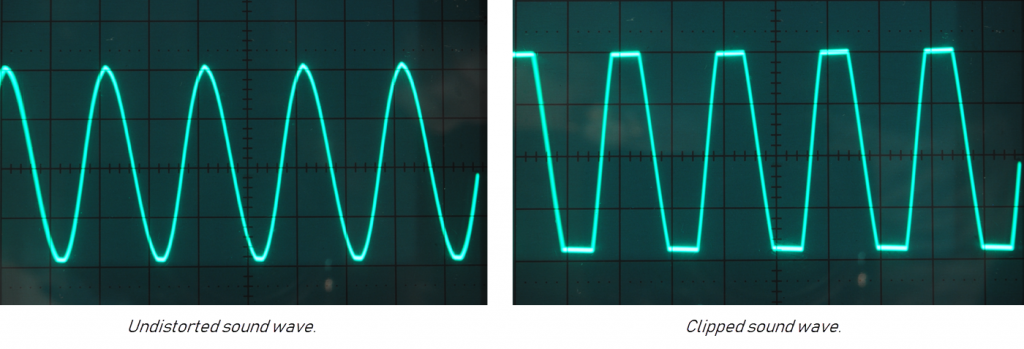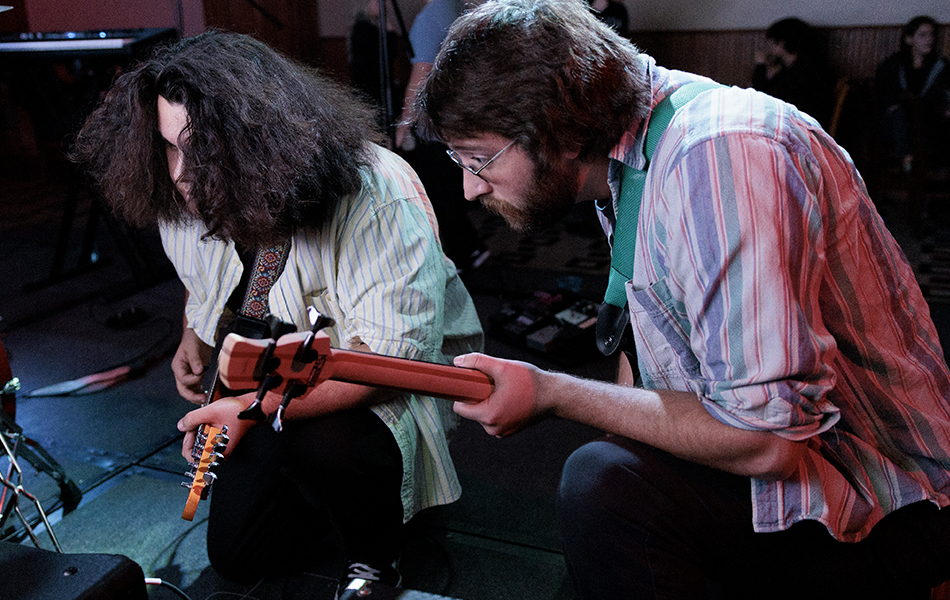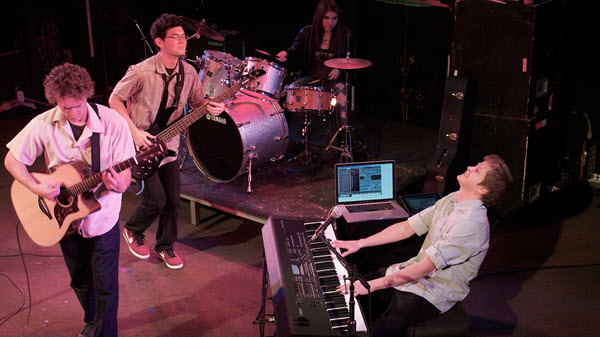Tagged Under:
Deciphering Power Ratings, Part 1: Amplifiers
Making sense of all those numbers.
Every PA system — whether designed for a solo artist at a coffee house or an arena show in front of 15,000 people — employs amplifiers: devices that take low-level audio signal and boost it into a stronger signal. They are necessary because speakers are very inefficient devices, and the signal coming out of your mixer is not strong enough to move speaker cones. Ideally, an amp simply boosts the signal without changing it in any other way, but all amplifiers have a limit to the amount of power they can generate. If you try to go past that point (or, conversely, if the amp is delivering too little power to a particular speaker), bad things can happen. The trick is choosing the right amp for the job.
Types of Amplifiers
Power amps come in several different types of packages. A “stand-alone” power amp like those in the Yamaha PX Series takes the signal from a mixer, boosts it and delivers it to a passive speaker (that is, a speaker that does not have its own built-in amplifier):
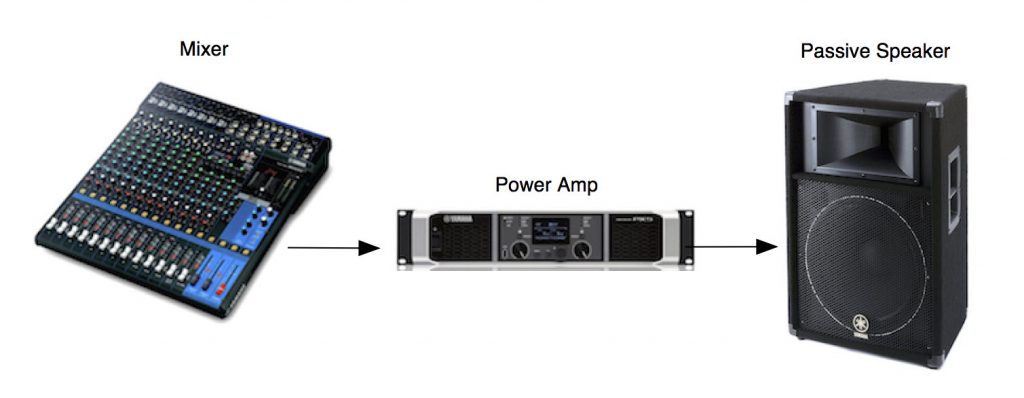
Stand-alone amps are versatile because they can become part of a larger PA system and grow with your needs. However, they require more connections, and you’ll have to match the amp to the speakers you are using. More about that in a minute.
The Yamaha EMX5 and EMX7 are examples of powered mixers; i.e., mixers that have a built-in power amp. Powered mixers are easy to set up because they require fewer interconnections — you simply hook them up directly to the speakers:
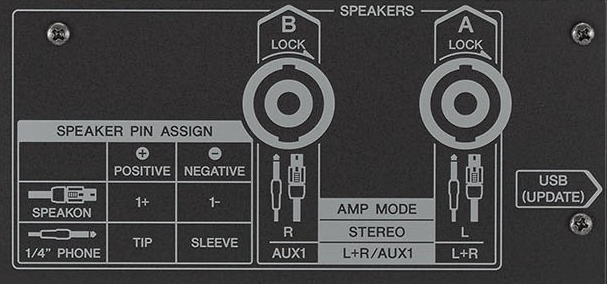
However, these kinds of mixers have somewhat limited flexibility because you can’t change the amplifier if you need more power. If you think you may need a larger PA system in the future, a powered mixer might not be the best choice.
Powered speakers like those in the Yamaha DZR Series have an amplifier built into the speaker cabinet. We’ll discuss these kinds of speakers in Part 2 of this article, coming next month.
Making Sense of the Specs
Choosing a power amp can be confusing because there are a lot of technical specifications to consider. Some of these specs are less important than others. For example, total harmonic distortion (THD) and noise levels in modern power amplifiers are so low that you’re not likely to hear them. Frequency response is also not a major concern because most modern amps can easily produce accurate response across the entire audible range of human hearing (20 Hz to 20,000 Hz).
However, one very important amplifier specification is power output, a number that tells you how many watts the amplifier can deliver into a specific load. A “load” is a device that consumes power — such as a loudspeaker. A speaker’s load is rated as its impedance and as you’ll see shortly, impedance affects the power amplifier’s output.
There are two things you need to keep in mind about choosing a power amplifier:
1. You want an amp powerful enough to not be overworked when playing loud music,
BUT
2. You don’t want the amp to have a power rating so high that there’s risk of damaging the speaker with excessive heat or mechanical stress.
For example, let’s suppose that you have a pair of Yamaha S115V passive speakers that you plan to use for gigging in a small club, and you want to pair them with an appropriate power amp. Start by looking at the specifications for the S115V, where you’ll find some important numbers. One is the sensitivity of the S115V, which is 99 dB. This means that the speaker will produce a Sound Pressure Level (SPL) of 99 dB measured one meter away from the speaker when the amp feeds it one watt. The illustration below shows the amount of power the S115V requires to produce various sound levels. (These numbers vary with the model of speaker.)

As you can see, doubling the power increases the SPL by 3 dB, so if the amp feeds the S115V two watts, it will play at 102 dB; four watts will produce an SPL of 105 dB, etc. That may seem very loud, but remember the measurement is made very close to the speaker (closer than most audience members are likely to be), plus your PA system needs to be heard in a venue with lots of background noise.
Next, look at the S115V power capacity specs and you’ll see three important numbers:
1. 250 watts noise. This means that the S115V can handle 250 watts of power when producing a noise test signal over a long period of time.
2. 500 watts program. This tells you that the S115V can handle 500 watts when producing a “program” test signal, a signal which more closely resembles music.
3. 1000 watts maximum (peak). This is the maximum amount of power that the S115V can accept instantaneously (for a fraction of a second) without damage.
The other important specification for the S115V is its nominal impedance, which is similar to resistance. Knowing the speaker’s impedance helps you understand how the S115V interacts with the amp’s power rating. Like most power amplifiers, the Yamaha PX5 has different power ratings for different loads. If you look at the chart below, you’ll see that the PX5 (second column from the right) can generate 500 watts per channel into 8Ω (8 ohms), 800 watts per channel into 4Ω, and 500 watts per channel into 2Ω. These numbers are for a short burst of sound and they represent the peak power output of the amp. The S115V has an impedance of 8Ω, so when you use it with the PX5, the amp will produce a peak output of 500 watts per channel.

Go back to the illustration before this one and check out how the S115V responds when fed 500 watts. As you can see, 500 watts will produce a SPL in the vicinity of 126 dB. (Way louder than you probably need!) What’s more important is looking at some of the lower numbers. At 256 watts, the S115V will produce an SPL of 123 dB, and at 128 watts, an SPL of 120 dB. That’s plenty of volume, plus it gives you significant headroom (extra power in reserve), meaning the PX5 is a good match for the S115V.
What happens if you try to run a pair of S115Vs from an amplifier that has a peak output of only four watts? Using such a low-powered amp would create a problem because it would drive the S115V to a maximum SPL of only 105 dB, and you’ll almost certainly need higher sound levels than that, even at small club gigs. When you increase the output of your mixer, the amplifier output also increases — but only to a finite point, and that point is called clipping. If you continue to raise the mixer’s output beyond that point, the amp’s output does not get any higher. Instead, the signal becomes distorted or “clipped.” You can see an example of clipping in the two illustrations below:
On the left is the maximum undistorted output of the amp; on the right, the input has been increased but the amp’s output cannot go any higher and so it chops off the top of the audio wave. This type of distortion is often the cause of loudspeaker failures, so it’s important to avoid underpowering your speakers.
Paralleling and Bridging
Some speakers, like the S115V, offer “parallel” connectors on their rear panel so you can link two speakers and power them from one amplifier channel.
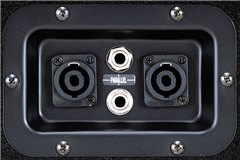
When you “parallel” two 8Ω speakers this way, the impedance presented to the amplifier changes to 4Ω — and that would increase the PX5’s output power to 800 watts per channel peak, so you’ll get more power out of the PX5 by running two S115Vs per channel. Is 800 watts too much power for a speaker that’s rated to handle 500 watts of program? Not necessarily, because the S115V specifications also tell you that the speaker can handle peaks up to 1,000 watts.
In addition, the PX5 has the ability to operate in a “Power Boost” mode, where the two channels are bridged to create one channel of higher output power (in this case, 800 watts into 8Ω, or 1400 watts into 4Ω). This means that you can use the amp with larger speakers — albeit monaurally — when the need arises in the future instead of having to replace it.
Traditionally a lot of pro audio engineers prefer to use power amps rated at twice the power capability of a speaker so that they have plenty of headroom. It’s kind of like driving a Ferrari in NYC traffic: You won’t need all that horsepower most of the time, but it’s nice to know you have it when you need it!
Click here for Part 2: Powered Speakers.
Photographs courtesy of the author.
Check out our other Tools of the Trade postings.
Click here for more information about Yamaha power amplifiers.










